#historical lingerie
Note
Hi! Firstly I love your blog and all your research posts, I find them such good overviews on dress history topics I'm not familiar with. I was wondering if you had any information on lacing throughout history? Like when it was used on different kinds of clothing (not just corsets and similar) and what style of lacing would have been used. I know this is very specific so understandable if it can't be done. Thank you!
Thank you so much!! It really makes me happy to hear that people get use and enjoyment from my history ramblings! :D
This is an interesting question and it relates very closely with the history of supportive undergarments (which I am working a post about, but I'm still in research phase so it will be a while). I won't guarantee this will be exhaustive answer, there's probably some types of garments I don't know use lacing and some I miss and remember next week at the middle of the night. I'm focusing on women's clothing to narrow down the massive topic, but to be clear men's fashion utilized lacing too to create fashionable figures, including in men's corsetry. A fair warning, this post kinda blew out of proportion.
Lacing in Western Fashion History
So lacing is a closure method and pretty interesting one, because it has room for adjustments. If we think of other closure methods like buttons, zippers etc, you can't adjust them on the go. The obvious benefit is the ability loosen or tighten it with the changing body thorough day and between them and also fit it much more easily to another body. The other and perhaps much more significant benefit is that it can be used to tighten the bodice of a garment to be supportive for the bust, which has been it's primary usage across western fashion history.
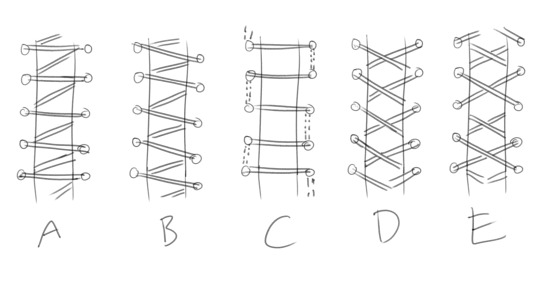
Here's my little sketch about the most common historical lacing methods.
A - spiral lacing with symmetrical eyelets
B - spiral lacing with asymmetrical eyelets
C - ladder lacing
D - standard lacing
E - cross lacing.
There's some drawbacks to it too, since it's also slower than any other closure method. Spiral lacing though is the most simplest and quickest one, which is perhaps why it was so much used thorough history.
Bliaut
Before Middle Ages and mostly thorough early parts of it, a lot of closure methods weren't popularized around Europe. Pins and brooches were the go to method and they had pretty limited use. Tailoring hadn't been developed either so clothes were made of simple cuts and were loose so they would be able to get on and off.
A side note: There were some examples of fitted garments in ancient times but I don't know enough about them or how they were fitted.
Bliaut was a tunic type overdress used by all genders in the French influence area in early Middle Ages, from around 11th to 13th century, when it fell out of fashion. In 12th century for women it became the quintessential "medieval dress" with fitted bodice, often wide long sleeves and a girdle at waist. To be clear the bodice seemed to have been also fitted for men.
There's not really a lot of info on how exactly it was constructed and there has been a lot of debate around it, but it was fitted with lacing on the side. One of the most famous example depicting the 12th century bliaut is a statue in a wall of Angers Cathedral from circa 1200. It's very detailed example showing the lacing.
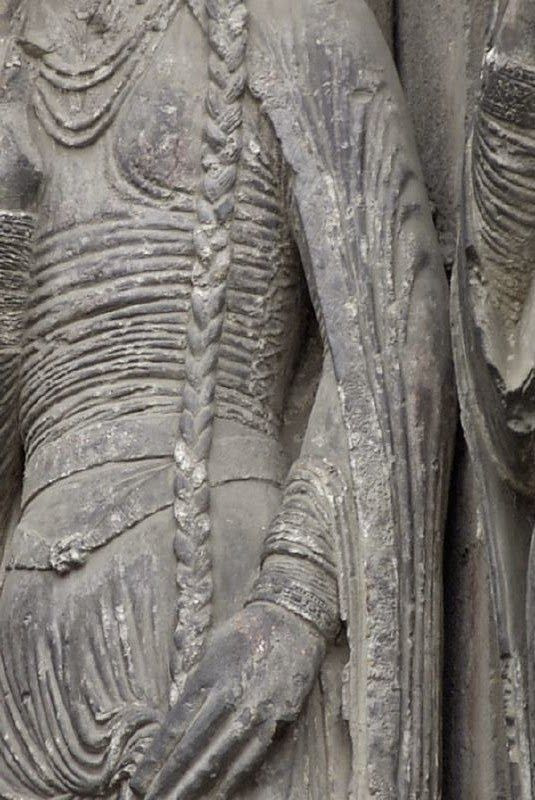
Tailoring still hadn't been developed yet, and it's theorized the bodice was rectangular, which is why the result wasn't smoothly fitted bodice but very wrinkled one. It's a little hard to make out, but it seems they used spiral lacing with symmetrical eyelets.
Soon after though bliaut went out of fashion in France influenced area and was replaced with much more loose styles till the 14th century.
Kirtle
Kirtle has many names, including cotte and cotehardie, which are sometimes used interchangeably, sometimes to refer to specific areas or periods, but I'll use only kirtle for ease. It also started as a loose garment for all genders. In 14th century tailoring was popularized and lacing made a comeback and so during the century kirtle became a formfitting supportive garment. Sometimes kirtle was closed with buttons, but that seems to be more popular for men's kirtles. Lacing or buttons were also used in sleeves to make them very form fitting too.
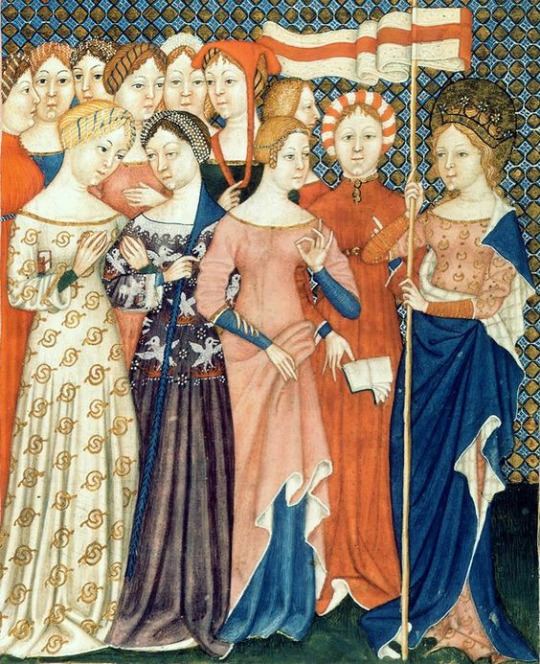
Here's an Italian painting from 1385-90. This style of kirtle with smooth front seemed to be popular around western Europe at the time. They either had lacing on side or back. I haven't seen a lot of paintings from the time where the lacing is shown, but it's probable they are using at least a lot of spiral lacing. Kirtle is also starting to become more of an undergarment as houppelande becomes fashionable as an overgarment at the end of the century.
15th century popular painting style is becoming more detailed, which is nice because they'll show the lacing. Front lacing in kirtle is popular, but you also see a lot of side lacing. Spiral lacing is still probably the most common style of lacing in paintings, but there's also cross lacing and ladder lacing, as in the painting below, which is from 1475-80.
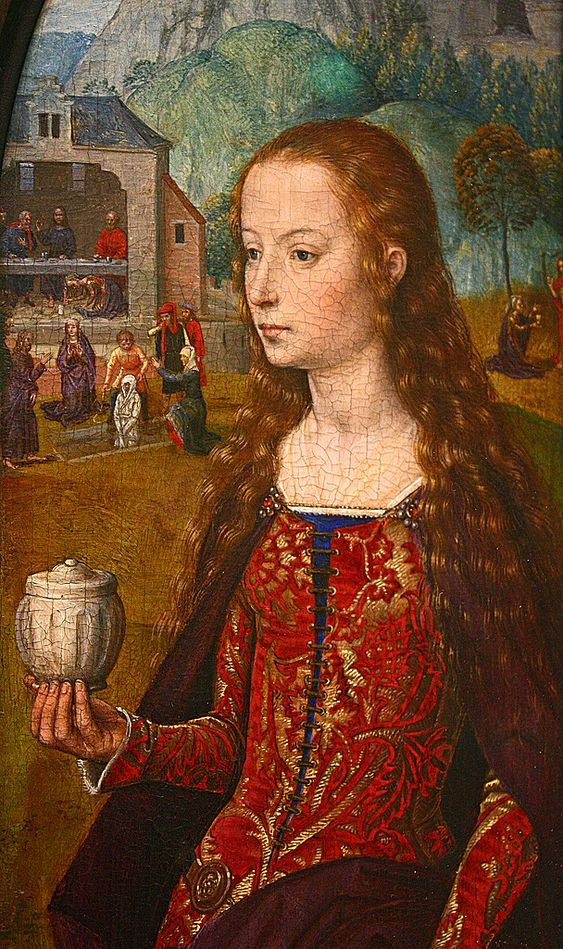
At the time (and sometimes already in 14th century) lacing was also used to add detachable sleeves. It made it probably easier to use the kirtle as an undergarment too. In late 15th century Italy (and to some extent German speaking area too) they took this idea to it's logical endpoint and made elaborate sleeves with tons of lacing and the shift bulging under it. The below example is a detail from 1493-96 painting.

Bathhouse dress
Aside from kirtle there was another laced garment, often called the bathhouse dress. The example below is from 1389, but they appeared in art as late as 16th century. They are depicted pretty much exclusively in bathhouse context, so it's possible it was a garment solely for bathhouse use. They are seen specifically in Central European art and most famously in Bohemian art, but also Austrian and High German. I have seen suggestions too that it was used as supportive shift too, and it's possible it was a supportive garment specific to that area. There were many different cuts of this type of dress, but the lacing seems to be either at the frond or the side.
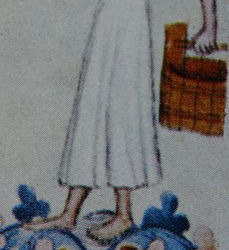
Boned bodices and pair of bodies
In earlier centuries kirtle was sometimes interlined with heavier fabric, but in 16th century it became very structured. They used heavy stiffened fabrics and increasingly towards the end of the century a lot of boning too. Pair of bodies as a separate garment from a supportive bodice was also born.
During Renaissance the variety of styles of clothing gets really out of hand. Kirtle would stay in working class use as far as 17th century, but upper classes transition towards more elaborate dresses that are far removed from the kirtle. During the latter half of 17th century working class would start to use separate pair of bodies and petticoats, before bodies would transition into stays around 1680s. Here's an example of a boned working class kirtle from 1626 with lacing on back side.
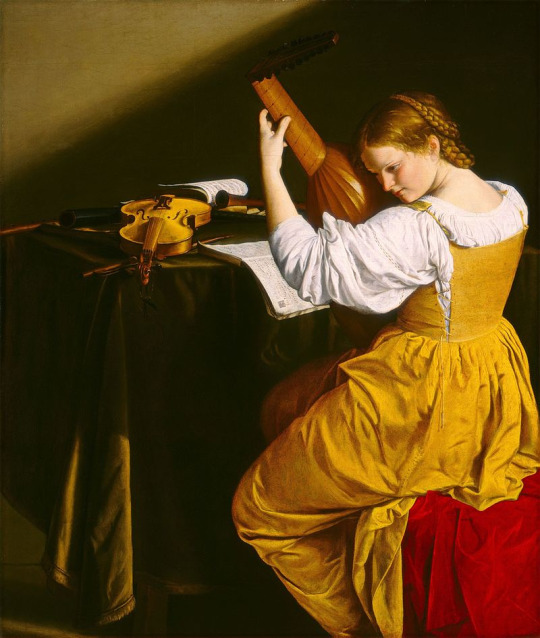
Every gown would utilize lacing, but often it wouldn't be seen in fashionable clothing. It could be very subtly done or hidden with a stomacher. Stomachers became increasingly popular towards the end of the century. There was still some places where visible lacing was fashionable for upper classes too like Italy (Venice specifically), Germany and Low Countries. And absolutely all kinds of lacing was used.
In Venice particularly there was a very specific style of boned bodices with ladder lacing on the front like in this example from mid 16th century.
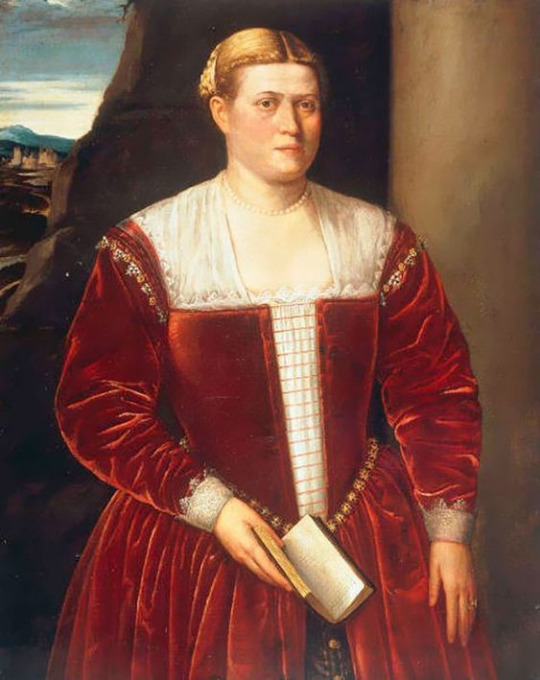
In the German speaking area, there was a very much not boned style where a very open bodice was laced in the front most often with spiral lacing, but I've seen examples of ladder lacing too. The example is from circa 1535.

When Baroque hits through in 17th century, fashion becomes more universal and less all over the place like it was in the previous century, but the fundamentals stay the same. Pair of bodies or heavily boned bodices were used and the closure method for these was very much still lacing. For pair of bodies, which could be used as outergarments outside of the formal occasions of upper class, it was usually on display, for bodices the lacing was usually hidden in the back, like in this example from 1660s. Sleeves could be often attached to bodies with lacing when used as outer garments.

The image limit is again the bane of my existence, so I'll continue in a reblog.
#answers#fashion history#historical fashion#fashion#history#historical clothing#historical dress#pair of bodies#undergarments#historical undergarments#lingerie#historical lingerie#lacing#medieval fashion#renaissance fashion#baroque fashion
123 notes
·
View notes
Text
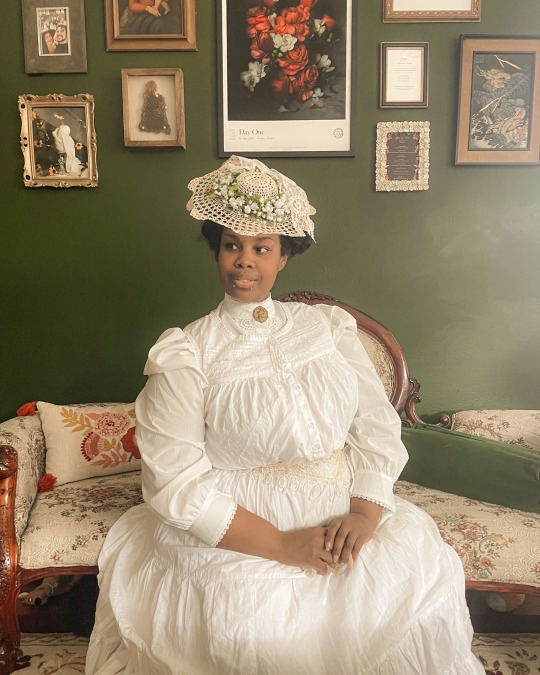
a close friend hosted a going away tea party in my honor, and I threw together different pieces in my closet/night gown drawer to make a turn of the century vibe happen. | IG
#edwardian aesthetic#edwardian#edwardian fashion#late victorian#dark academia#black dark academia#antique aesthetic#poc dark academia#historical costume#historic academia#victorian academia#victorian aesthetic#mignonne#2022#summer dress#lingerie dress#turn of the century#black people in period clothing#green
3K notes
·
View notes
Text



Vintage 1950s plus size bra by Lyana
#vintage fashion#vintage lingerie#vintage clothing#pink aesthetic#vintage aesthetic#bullet bra#ballerina aesthetic#angelic aesthetic#historical clothing#extant#mine#I didn’t take it but I bought it lol
812 notes
·
View notes
Photo

Fly Agaric in an Edwardian lingerie dress
#art#digital art#mushrooms#mushroom person#spooky#spooky season#autumn#history#historical dress#edwardian#edwardian dress#lingerie dress#fly agaric#amanita muscaria#mushroom#Character Design#monster art#historical fashion
436 notes
·
View notes
Text




It got hot real quick and I just really want a long lace skirt to parade around in, so I'm gonna see what I can do with a lacy tablecloth an aunt gave me ages ago
I'm changing the butterick B6018 to match this 1908 Corselet skirt shared by marquise.de
Very experimental, so I guess we will see
#this is just to tide me over until i can sew the well thought out and properly planned Edwardian lingerie dress of my dreams#a talia original#talia's adventures in dressmaking#quick lacy corselet skirt#excerpts from my life#sewing#historical costuming
26 notes
·
View notes
Text
bernadette banner recreated mary poppins’ dress and it’s so lovely!
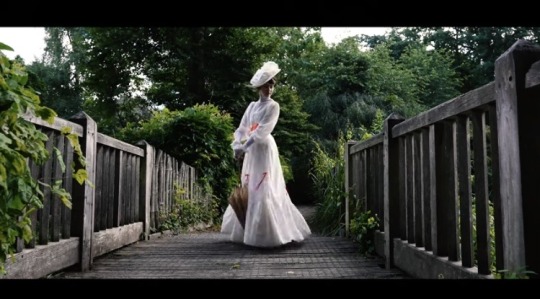
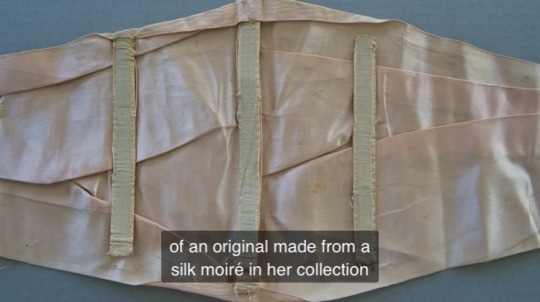



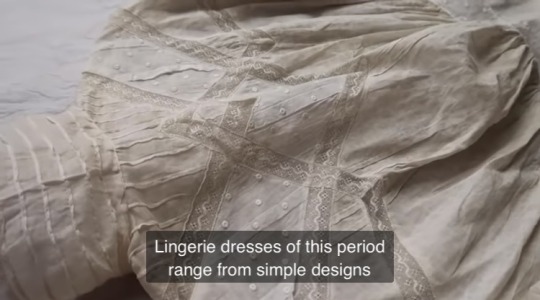
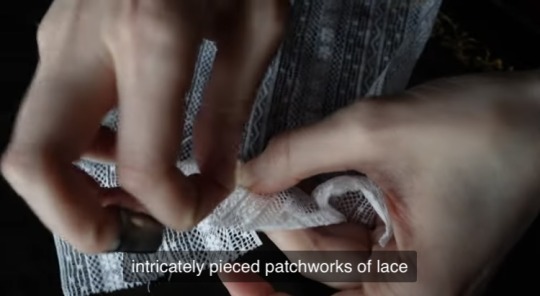
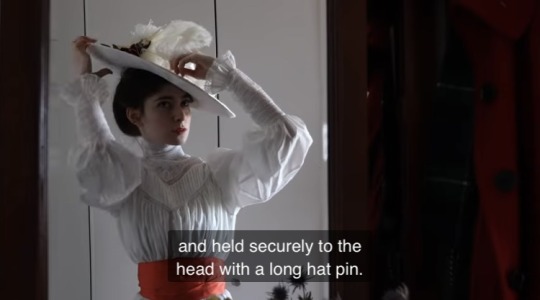

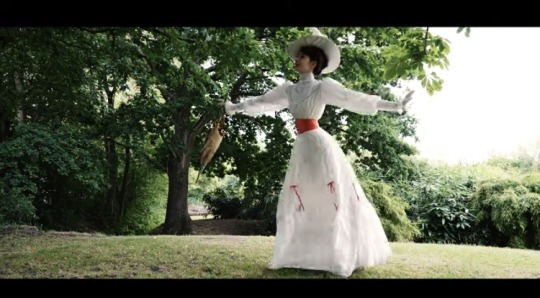
here is the link to the video
#bernadette banner#historical fashion#edwardian lingerie dresses#cotton lawn#lace#mary poppins#corset#belt#🍰🍰🍰🍰🍰🍰🍰🍰🍰🍰#costume#costume design
92 notes
·
View notes
Text

6 notes
·
View notes
Text

Lingerie section in the Grands Magasins du Printemps luxury department store in Paris
French vintage postcard
#historic#magasins#photo#briefkaart#printemps#vintage#luxury#store#sepia#grands#du#photography#carte postale#paris#lingerie#postcard#postkarte#postal#tarjeta#ansichtskarte#french#old#ephemera#postkaart#section#department
4 notes
·
View notes
Text
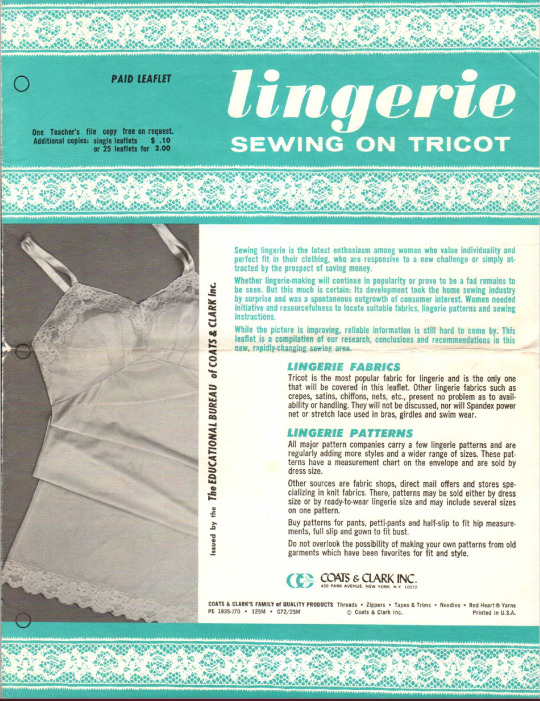
I digitized a really neat leaflet about sewing lingerie and working with tricot fabric from the 1970s! You can find the whole thing on my blog.
#1970s fashion#historical fashion#sewing#sewing resources#historical fashion resources#20th century fashion#lingerie#sewing lingerie#zippyelly blog
6 notes
·
View notes
Text
instagram

Historical Romance: When She Buys Lingerie for Herself
#sarah maclean#historical romance#lingerie#booklr#romance reader#nine rules to break when romancing a rake#Instagram
2 notes
·
View notes
Text



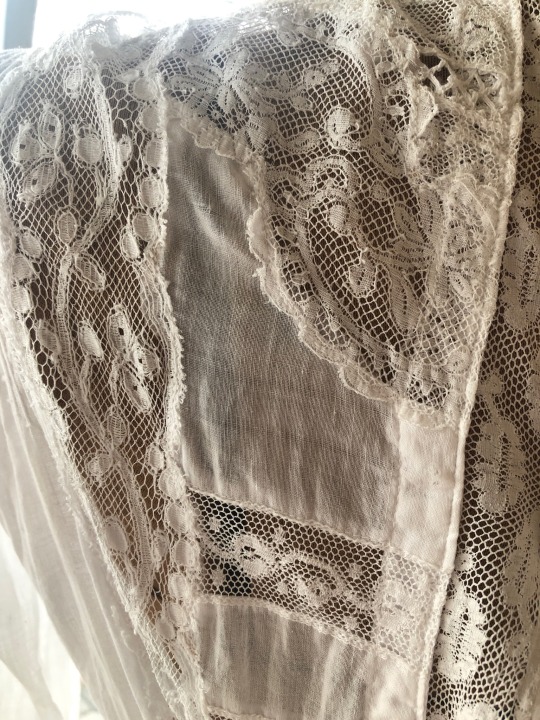
A 1900’s-era lingerie dress that I can’t help but stare at every time I visit this antique store
5 notes
·
View notes
Text



Closeups of this work. Last post of this, I promise!
Image ID: A screenshot of a digital illustration made in ms paint, showing a pale woman's face against a blue sky. She has red, slightly curly hair bundled up behind her loosely and strong features including brown eyes, pink lips, a large nose and bushy eyebrows. She is wearing a short yellow hat covered in three pink roses and a blue ribbon covering the base of the hat. The sheer and floral embroidered high collar of her gown can be seen at the bottom of the screenshot. End ID
Image ID: A screenshotted closeup of an ms paint illustration, showing a pale woman wearing an embroidered white Edwardian era lingerie dress sitting on a black bench with grass and dandelions behind her and the rest of the angled concrete sidewalk below her. Her face is not shown, but part of her gown is. She has one arm draped over the back of the bench with her forearm hanging down, and the other sitting on the arm of the bench. Her bodice is loose and gathered into the wide blue satin waist. Her sleeves transition from the solid bodice to semi-sheer sleeves that balloon out and then get gathered at the elbow into a short ruffle above plain glothes. Above all this is the high collar of her bodice with more sheer fabric - below this, her skirt drapes over her knee as she crosses her legs. Her bodice, sleeves, and collar are all decorated with loose, flowery embroidery. End ID
Image ID: A screenshotted closeup of an ms paint illustration. The bottom of a wide skirt is seen above grey ground, littered with tiny individual dots to create texture. The skirt has three bands of lace inserts, made to look semi-sheer by being darker than the rest of the white fabric. Two hands are equidistant, and the last one is flush with the skirt's hem. A repeating vine and flower or rose motif is seen along each of the bands - the light embroidery starts with a rose, loops once, forms another rose, and repeats with smaller loops forming leaves along the vines. Folds in the fabric form as the skirt is draped from a partially shown leg down to the ground from right to left - the shoe is off-white, with black and pink bands on the heel. End ID
#long post#white#image description#image id#alt text#edwardian era fashion#lingerie dress#ms paint#ms paint art#my works#close ups#historical fashion
6 notes
·
View notes
Text
screaming and crying when i see “vintage sellers” online selling 18th century waistcoats and shit for like $90 so someone can either destroy it with sweat and dirt and wear or they can shove it in a garment bag in the back of their closet where no one can see it or learn from it. this is definitely like. nuanced and it’s hard to draw the line between something that’s vintage and something that’s.. idk an “artifact” that should be preserved and museums definitely do not always do what they should or treat their collections perfectly BUT gd it’s gotta be better than the dpop girlies
#idk idk!!!#because we definitely don’t do as much with our textiles collection as we could and i’m trying to change that#but we’re a tiny county historical society like#even the state historical society has a special archive for clothing and textiles and they have a preservation specialist etc#i’m working on cataloguing and storing all the lingerie in our archives rn and designing an exhibit for that#so i guess i have garments on the brain#but it’s always been a pet peeve i guess#like there’s definitely way worse things people do but this one thing bothers me personally lmao
2 notes
·
View notes

